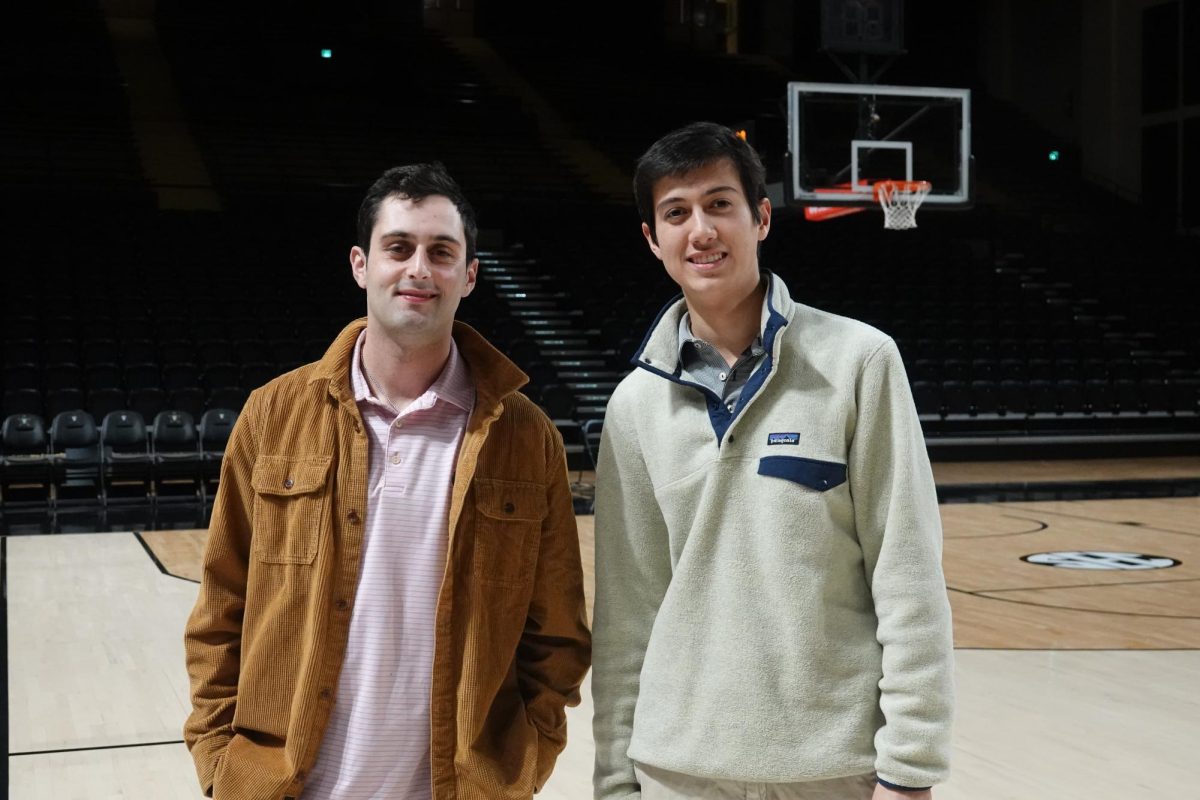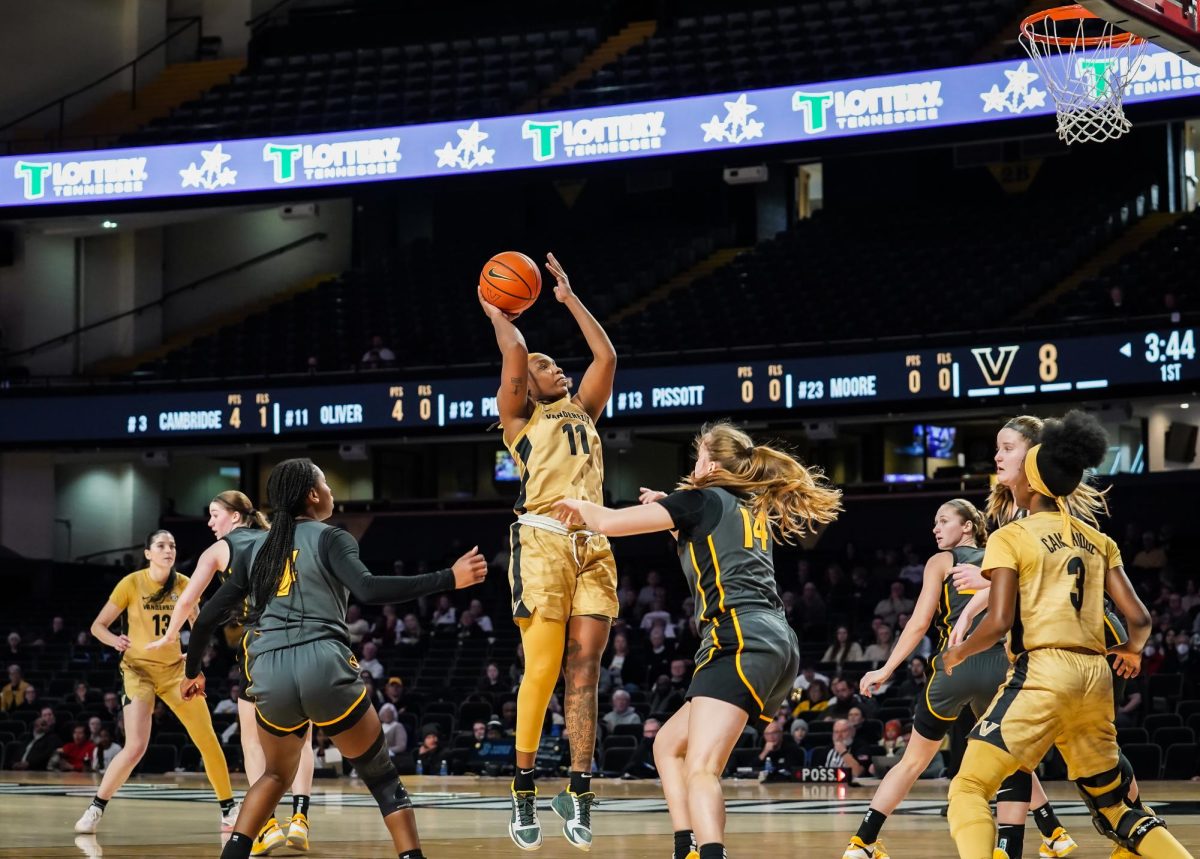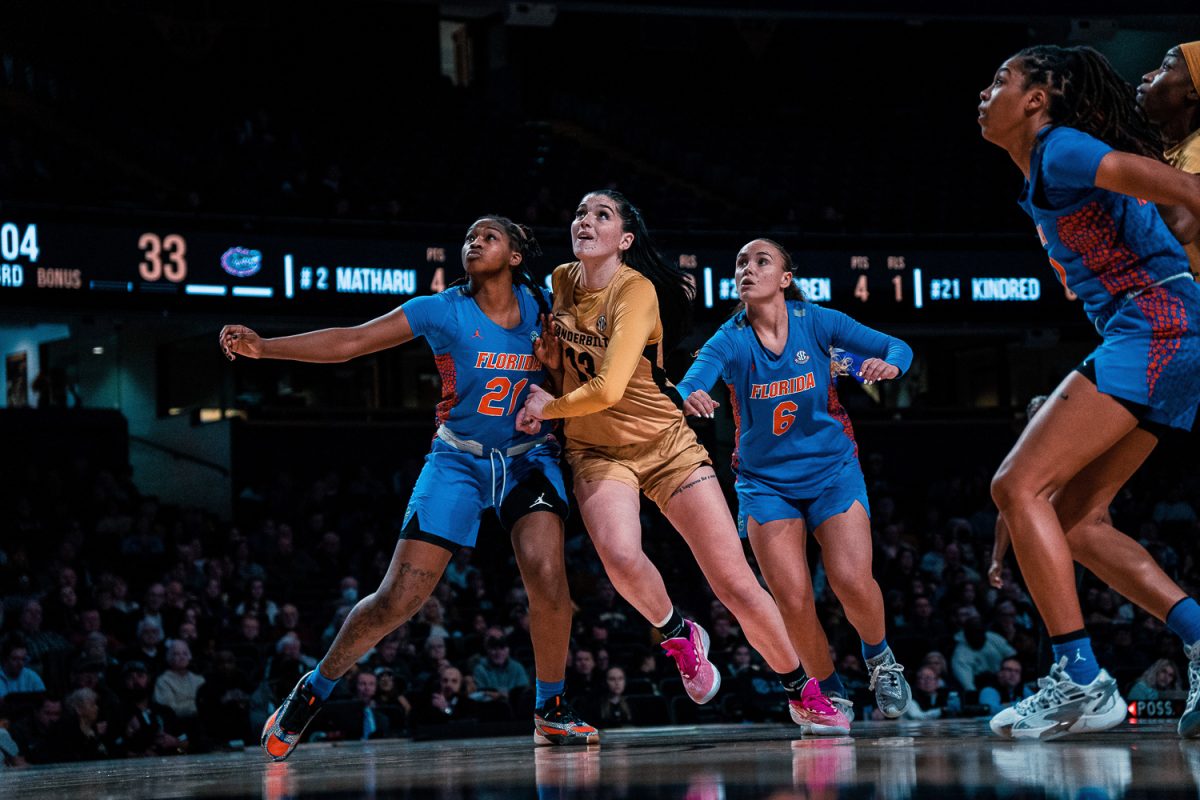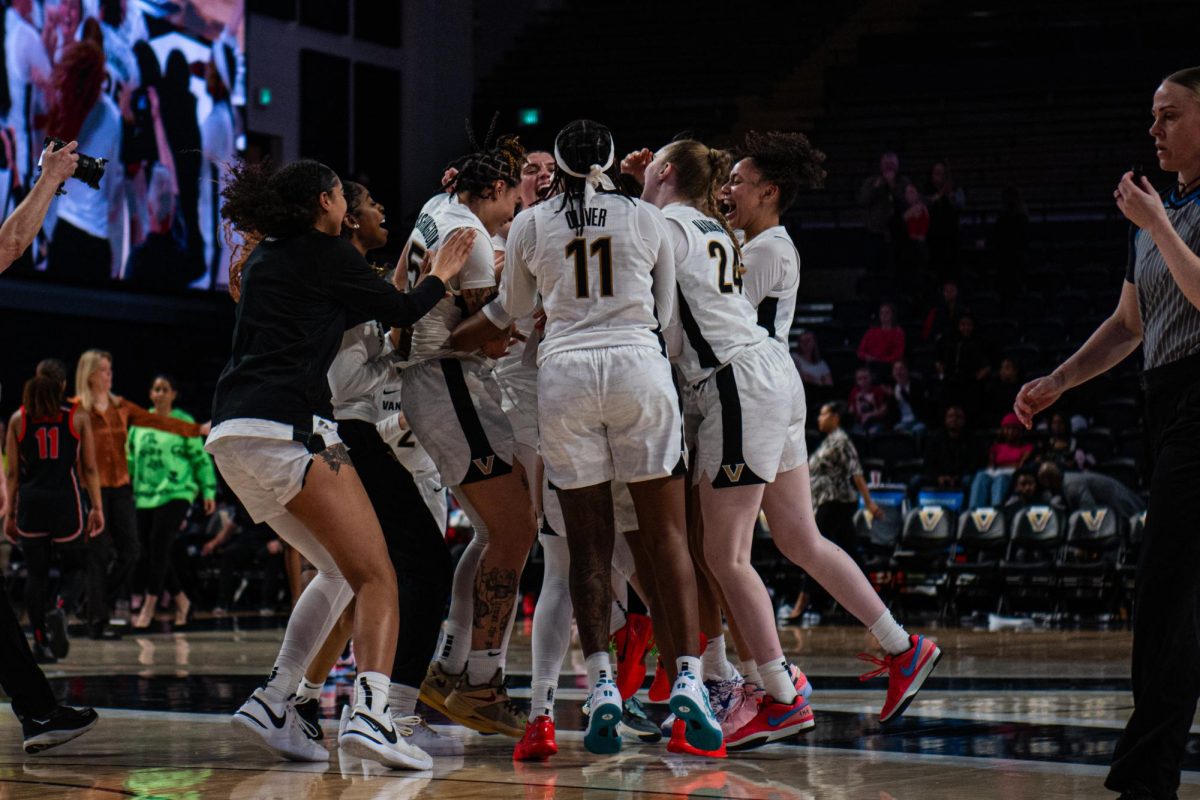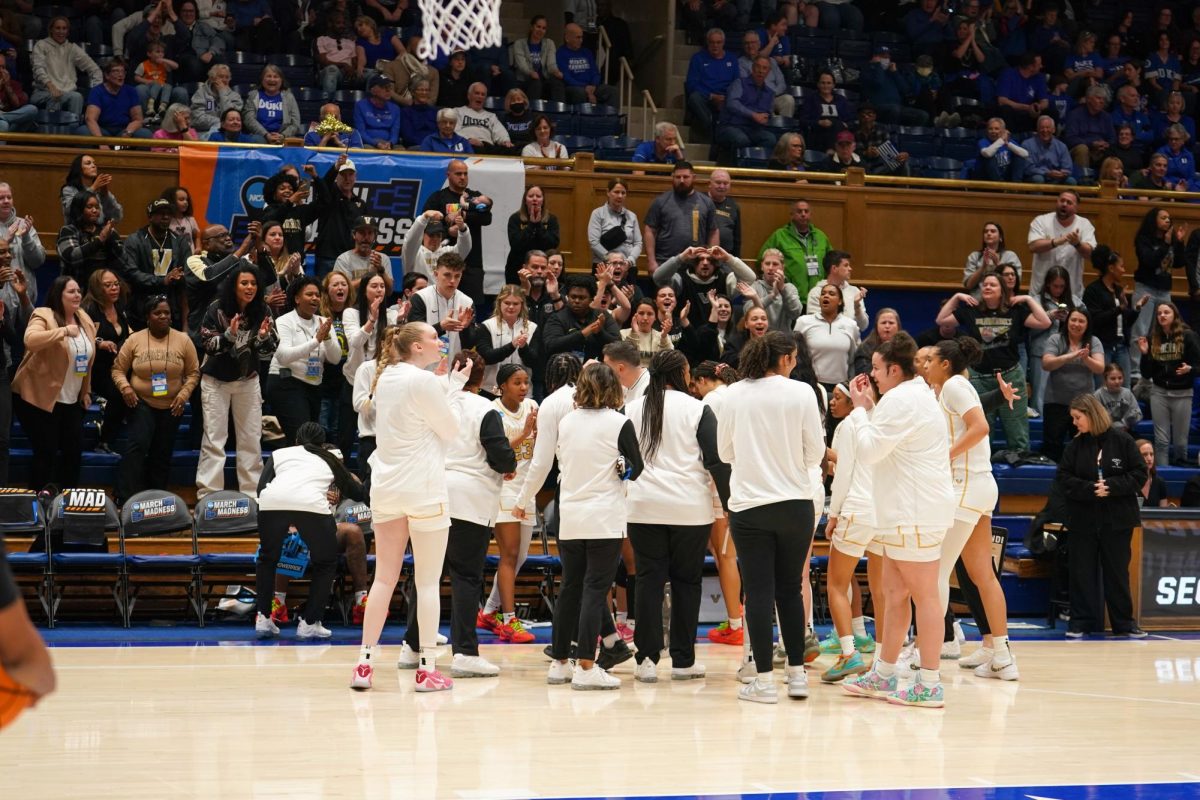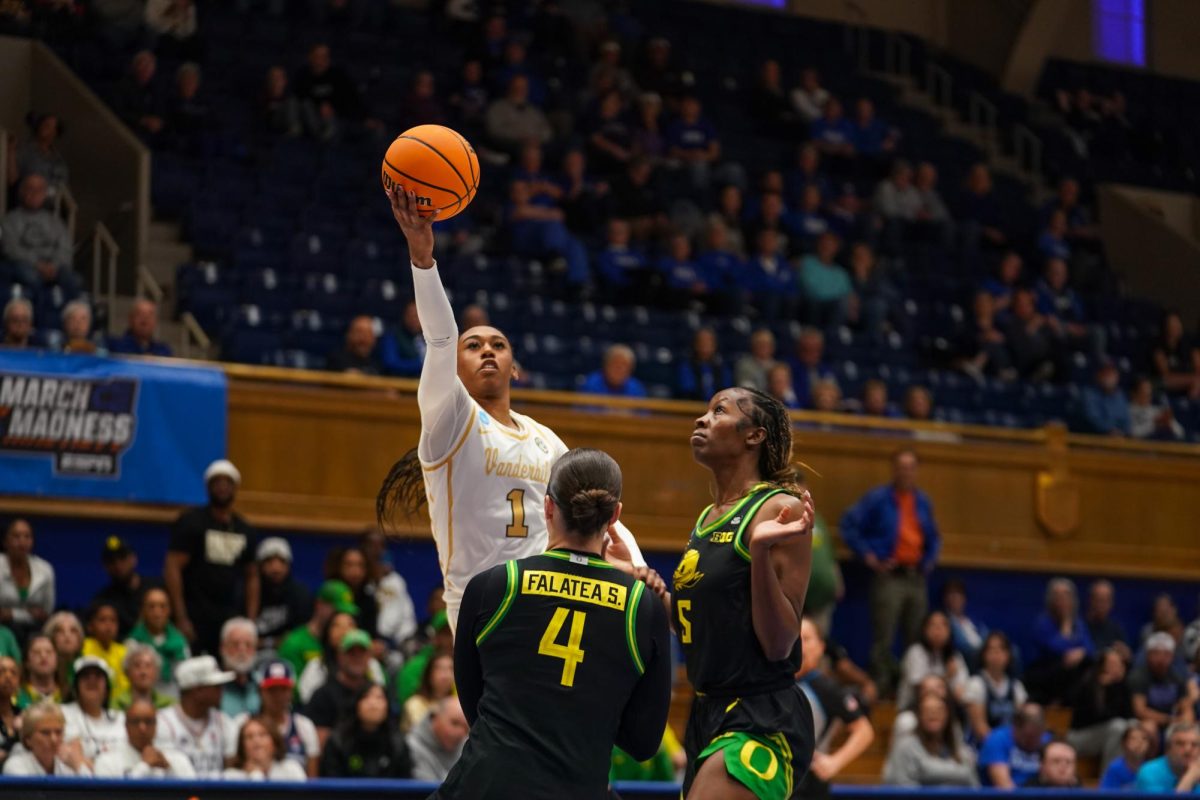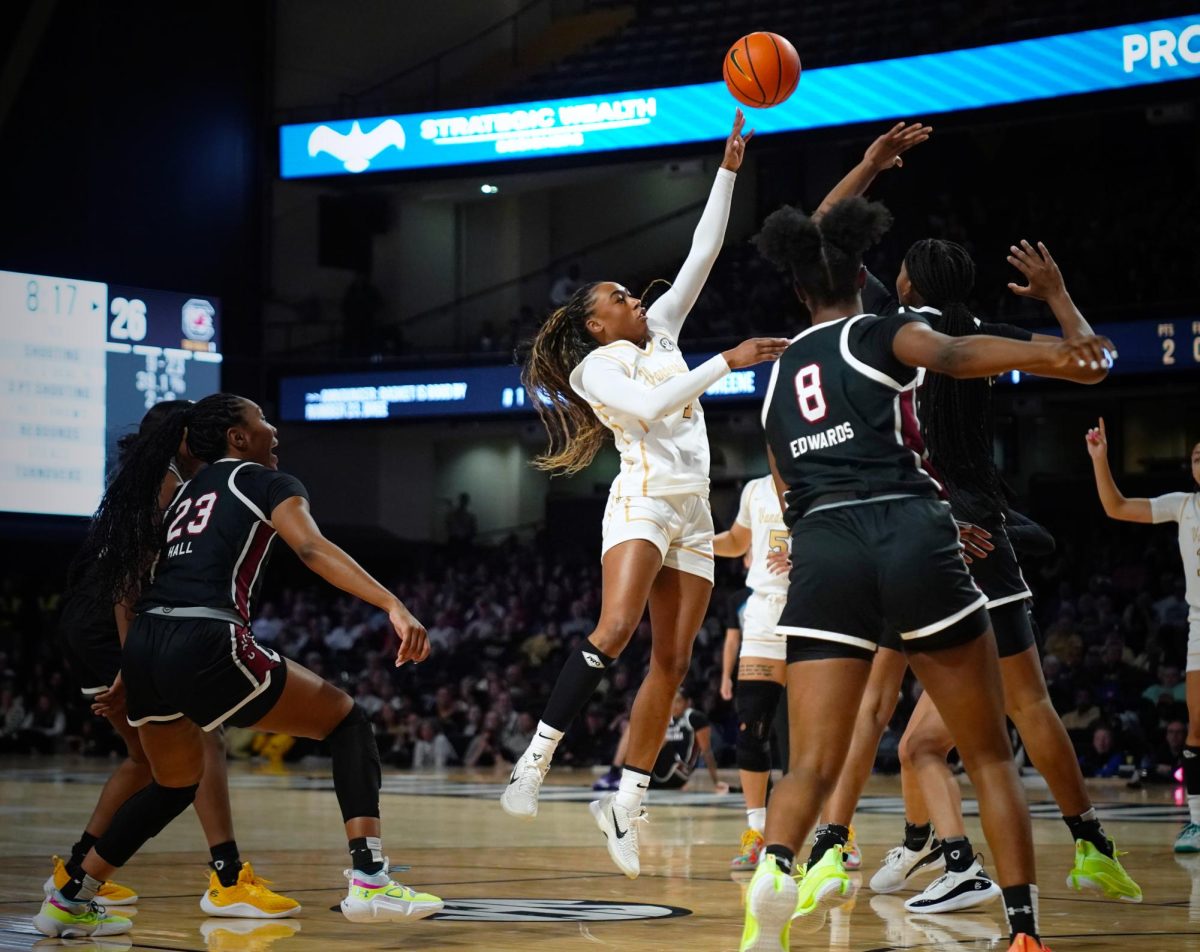Life comes at you fast. When the last Memorial Minutes was penned, Vanderbilt Women’s Basketball stood at 12-1 as SEC play loomed. Five games later, the Commodores are 14-4 with three consecutive losses.
After opening the SEC slate with a dominant 108-82 victory over Georgia, head coach Shea Ralph’s squad has dropped games to No. 16 Kentucky (96-78), Ole Miss (87-59) and No. 5 LSU (83-77). None of those losses are particularly bad — in all likelihood, all three will be NCAA Tournament teams. The losing streak also isn’t as bad as last season’s five-game skid, a stint the Commodores still overcame to make the postseason.
Vanderbilt is still, without a doubt, squarely in the hunt for another NCAA Tournament berth, and the Commodores will have plenty more opportunities for SEC wins as the season unfurls. Arkansas, Florida, Auburn, Texas A&M and Missouri all remain on the schedule as games Vanderbilt should win, and Ralph and Co. — as proven by their performance against a top-five LSU squad — shouldn’t be counted out against any opponent.
However, something has clearly gone awry over the course of the last three games; particularly against Kentucky and Ole Miss, which the Commodores lost by an average of 23 points.
“It’s not going to get any easier,” Ralph said at the LSU postgame press conference. “The team that we looked like last week isn’t the team that we are, and I won’t allow that to be the team that takes the floor again.”
Ralph is right: It’s not going to get any easier. The SEC is the best league in the country, and the Commodores’ deficiencies can’t all be fixed through changes to X’s and O’s.
“You learn the most about yourself when you fail,” Ralph said. “Those can be your greatest lessons.”
So, what lessons can be drawn from Vanderbilt’s recent streak of losses?
Late rotations
The first issue with the Commodores is, in fact, an issue of X’s and O’s. That’s not to say Ralph and her staff are doing anything wrong — their basketball knowledge vastly exceeds that of my own. What is apparent, though, is that with the roster’s current construction, there is a clear tradeoff to Vanderbilt’s aggressive style of defense.
A press-and-trap-heavy defense is Ralph’s signature. It is what has defined the program over the course of the last four seasons. It generates turnovers, throws opposing offenses off-balance and makes other teams generate an explicit game plan against Vanderbilt.
It also has a drawback: It’s leading to a lot of open shots off late rotations.
The issue is most apparent against teams that take a lot of 3-pointers. Kentucky is the clearest case in point, as the Wildcats shot a scorching 15-of-31 from beyond the arc in their 18-point win over the Commodores. Not all of those were open, but they weren’t all contested either, and rotating to shooters has been a problem for Ralph’s squad for multiple years. Go all the way back to last season’s near loss to Fairfield and one can find examples of late rotations leading to open triples.
It wasn’t as big of a problem against LSU, a team that likes to drive to the basket more than Ole Miss or Kentucky, but the issue still reared its head late in the game.
“Defensively, we weren’t rotating as quickly,” Ralph said. “I thought maybe we could rotate and get a steal and a bucket. We didn’t. Instead, I think we gave up an open jump shot and a layup.”
None of this is to say that Vanderbilt should stop playing aggressive defense — that would be a mistake. However, the issue of late rotations does beg another issue entirely: whether Vanderbilt’s shortened lineup has the motor to run an aggressive style of defense for the entirety of a game. The issue of lineups is where we turn next.
Lineup rotations
Trapping and pressing on defense is easier to do with fresh legs. As every team does with the start of conference play, Vanderbilt has dramatically shortened its lineup throughout the last four games. That means starters are playing longer periods, draining them of the energy they need to play Ralph’s style of defense effectively. The question stands: Where is the bench?
Only two players have come off the bench to play at least five minutes apiece against Ole Miss, Kentucky and LSU — Madison Greene and Leilani Kapinus. Aiyana Mitchell, the Commodores’ tallest player and backup center, played only three minutes in the loss to LSU — a team with a lot more size than Vanderbilt. The loss of Sacha Washington is obviously being felt in terms of minutes on the interior, but the bigger question is what happened to the backups on the perimeter.
Let’s be specific: Where are Aga Makurat and Justine Pissott? Pissott received four minutes of play against Ole Miss, zero against Kentucky and another DNP against LSU. Makurat hasn’t touched the floor at all during that period. Last season, Pissott was a starting wing while Makurat filled in for valuable bench minutes.
At a minimum, they are a pair of forwards who can space the floor and allow other players valuable breathers. Neither are defensive stalwarts, but their size and length provide theoretical defensive upside, should the coaching staff prove capable of bringing it out of them. If I had to guess, they likely aren’t being played because of a lack of defensive intensity. That reason should be just the motivation they need to take both sides of the ball seriously.
Playing Pissott and Makurat for even 5 minutes per game means that the starting lineup would get an additional 10 minutes of collective breathing time, making them fresher for defensive rotations. Whatever the reason for their lack of playing time, the Commodore faithful should hope it gets resolved quickly. Vanderbilt needs more bodies, and it needs them fast.
Outgunned and outmanned
As mentioned earlier, not all of Vanderbilt’s problems are fixable by X’s and O’s. Some of them are merely a function of the roster’s construction. The most obvious of those is size. Without Washington — and with Pissott and Makurat getting few minutes — the Commodores are severely lacking in the size department.
To put the deficit in context, Pierre — Vanderbilt’s starting center (though really a power forward) — is 6’2. When Vanderbilt went up against Kentucky, the Wildcats boasted three starters taller than that. Ole Miss also featured four starters 6’0 or over, while LSU had three. That discrepancy has very obviously translated itself into a disadvantage when it comes to rebounding.
Against Kentucky, the Commodores were only out-rebounded by two. Against Ole Miss, however, the deficit shot up to 10. Against LSU, it doubled to 20, including a 21-7 disparity in offensive rebounds. That’s right — Vanderbilt was tripled on the offensive boards in a game it only lost by two possessions.
The most conspicuous example happened with just a minute left in Baton Rouge. Down only three, Vanderbilt needed a defensive stop to get in position to tie the game up. LSU’s Mikaylah Williams forced up a three, only for it to bounce off the rim to the right and down to Flau’Jae Johnson. With a second shot at the basket, Johnson forced up the shot immediately, only for it to fail once more. That’s when Aneesah Morrow had her own look at the basket, snagging one of her game-high 15 rebounds and putting it back in with a jumper. The lead swelled to five points, and Vanderbilt never recovered from that point on.
Like on the men’s side, there’s really nothing Vanderbilt can do about its size at this point in the season. Mitchell could play more minutes, but she managed two fouls in three minutes of play against LSU. Perhaps she can get up to 10 minutes a game, but that still doesn’t do anything about the lack of a true center in the starting lineup.
Some things need to change for Vanderbilt Women’s Basketball to right the ship. Some of those are imminently fixable; others are not. The three-point loss to LSU was a huge step in the right direction, but Ralph and this program are very vocal that they don’t do moral victories. If the Commodores want to turn those moral victories into real ones, they’ll have to overcome some of the above issues, and fast.
They’ll have another chance to do so when they welcome Tennessee to Memorial Gymnasium on Sunday, Jan. 19 at 2 p.m. CST.






